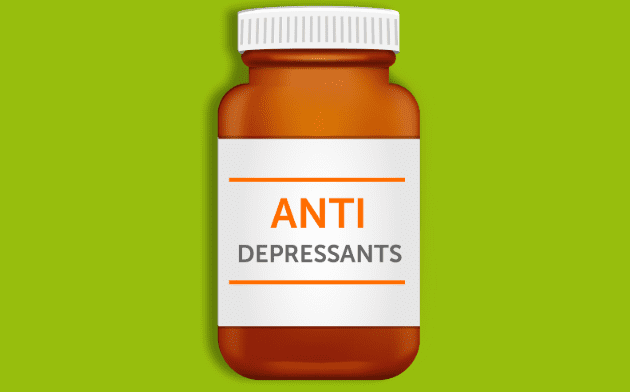Fibromyalgia arrived in my life like an uninvited storm. It didn’t ask permission. It didn’t come with a warning, It just showed up and turned my world upside down. The constant pain, bone-deep fatigue, and relentless brain fog made even the simplest tasks feel like impossible battles. For a long time, I felt powerless. I let fibromyalgia dictate my days, define my limits, and chip away at my confidence. But something changed. I decided I couldn’t live in survival mode forever. And that was the moment I started taking my power back.
This isn’t a story about cure. It’s a story about reclaiming control—over my body, my mind, and my identity. It’s about shifting from a passive patient to an active participant in my own life. Here’s how I did it.
I Stopped Apologizing for My Illness
For years, I said “I’m sorry” more than I said “I’m hurting.” Sorry for canceling plans, Sorry for moving slowly. Sorry for needing help. I thought being sick made me a burden. But one day, I realized that constantly apologizing was reinforcing the idea that I was somehow wrong for being ill.
So I stopped. I replaced apologies with honesty. I started saying “Thank you for understanding” instead of “Sorry I’m not well.” That small shift changed how I viewed myself. It reminded me that I was worthy of kindness, just as I was.
I Redefined What Strength Meant to Me
Before fibromyalgia, I thought strength was about pushing through pain, proving resilience by refusing to slow down. But that version of strength broke me. It left me burnt out, flared up, and emotionally drained.
Now, I see strength as knowing when to rest. It’s about honoring my limits, setting boundaries, and still finding ways to show up—for myself and others—in meaningful ways. Strength isn’t the absence of pain. It’s the presence of self-respect in the middle of it.
I Learned to Say No Without Guilt
One of the most liberating decisions I made was learning to say no. No to events I couldn’t handle. No to people who drained me. No to expectations that didn’t align with my new reality. It wasn’t easy at first. But each “no” carved out more space for the things that mattered most.
Saying no wasn’t rejection. It was redirection—toward a life that supported my healing rather than denied it.
I Took Control of My Narrative
For too long, fibromyalgia was the loudest voice in my story. It told me I was broken. It told me I’d never be the same. And I believed it. But over time, I started writing a new chapter—one where I was the lead, not the illness.
I began sharing my story with others. Not for sympathy, but for connection. In speaking up, I found people who understood. I found my voice. And with every word I shared, I took back the power fibromyalgia had stolen.
I Built a Toolbox of Coping Strategies
Reclaiming power also meant getting practical. I started listening to my body and learning what helped. Some days, it was heat therapy and stretching. Others, it was journaling or practicing mindfulness. I kept track of triggers, patterns, and what calmed my nervous system.
Over time, I built a toolbox that helped me feel more in control. I wasn’t helpless anymore. I had strategies, I had options. And that made all the difference.
I Found a New Kind of Joy
Joy used to be tied to big experiences—travel, achievements, adrenaline. Fibromyalgia changed that. But instead of mourning what I lost, I looked for new ways to feel alive.
Now, joy is found in slow mornings, deep conversations, creative outlets, and quiet victories. I stopped chasing the life I had and started embracing the life I was building. And in doing so, I found a deeper kind of happiness—one rooted in gratitude and resilience.
I Embraced Progress Over Perfection
Healing isn’t linear. There are setbacks, flare-ups, and frustrating moments where it feels like nothing is working. But I stopped measuring success by how “normal” I could appear. I started measuring it by how true I was to myself.
Some days I do more. Some days I do less. Both are okay. Every small step forward counts. And that mindset shift helped me stop punishing myself for the things I couldn’t control.
Frequently Asked Questions
1. Can you really take back control from fibromyalgia?
Yes. While you may not eliminate the condition, you can reclaim agency over your mindset, daily choices, and emotional well-being.
2. What does it mean to take back your power with chronic illness?
It means no longer letting the illness define your identity. It’s about setting boundaries, practicing self-care, advocating for yourself, and living intentionally.
3. How do you deal with the emotional toll of fibromyalgia?
Therapy, journaling, connecting with supportive people, and allowing space for grief and joy are essential for emotional healing.
4. Does saying no help in managing fibromyalgia symptoms?
Absolutely. Saying no to draining activities helps preserve energy, reduce stress, and prevent flare-ups.
5. How can others support someone who is trying to take back their power from chronic illness?
Listen without judgment, respect boundaries, offer practical help, and encourage autonomy without pressure or pity.
6. Is it possible to feel joy again with fibromyalgia?
Yes. Joy may look different, but it is absolutely possible through mindfulness, gratitude, creativity, and meaningful relationships.
Fibromyalgia took a lot from me—but not everything. It didn’t take my voice. It didn’t take my worth. And it certainly didn’t take my ability to rise. Taking back my power wasn’t a single act. It was a series of small, conscious choices to live with intention, compassion, and courage. This is still my life. And I’m still writing the story—on my own terms.
For More Information Related to Fibromyalgia Visit below sites:
References:
Fibromyalgia Contact Us Directly
Click here to Contact us Directly on Inbox
Official Fibromyalgia Blogs
Click here to Get the latest Chronic illness Updates
Fibromyalgia Stores


